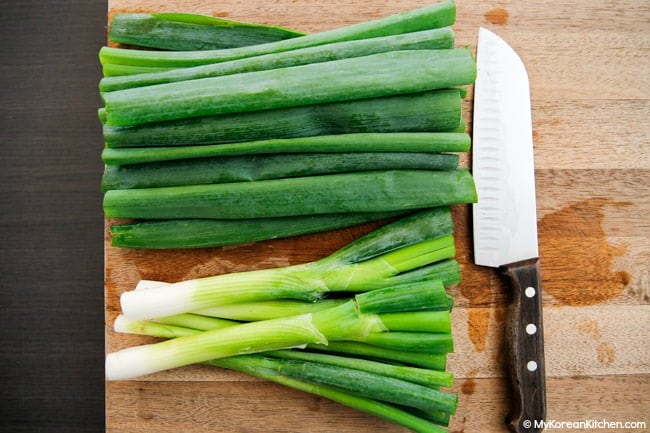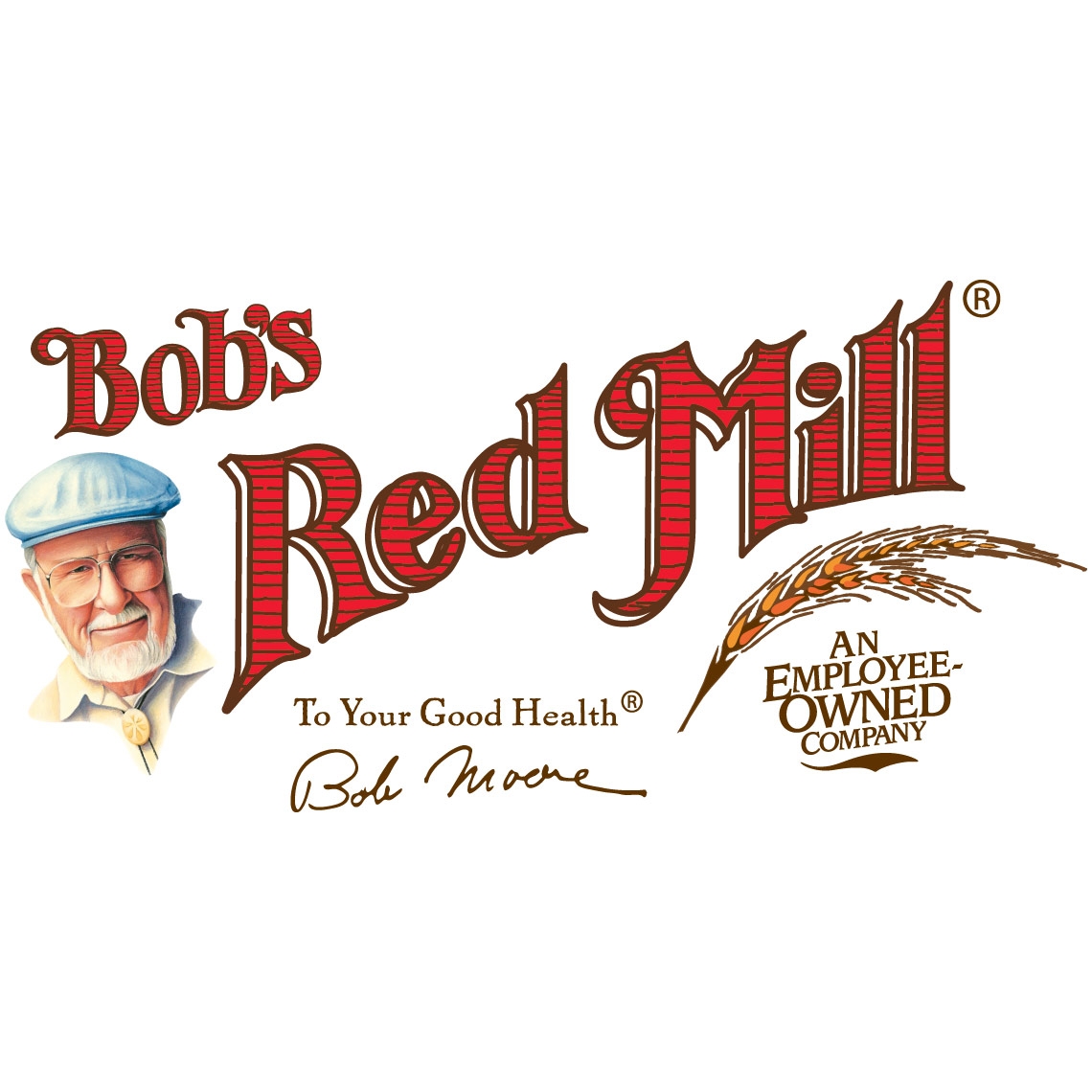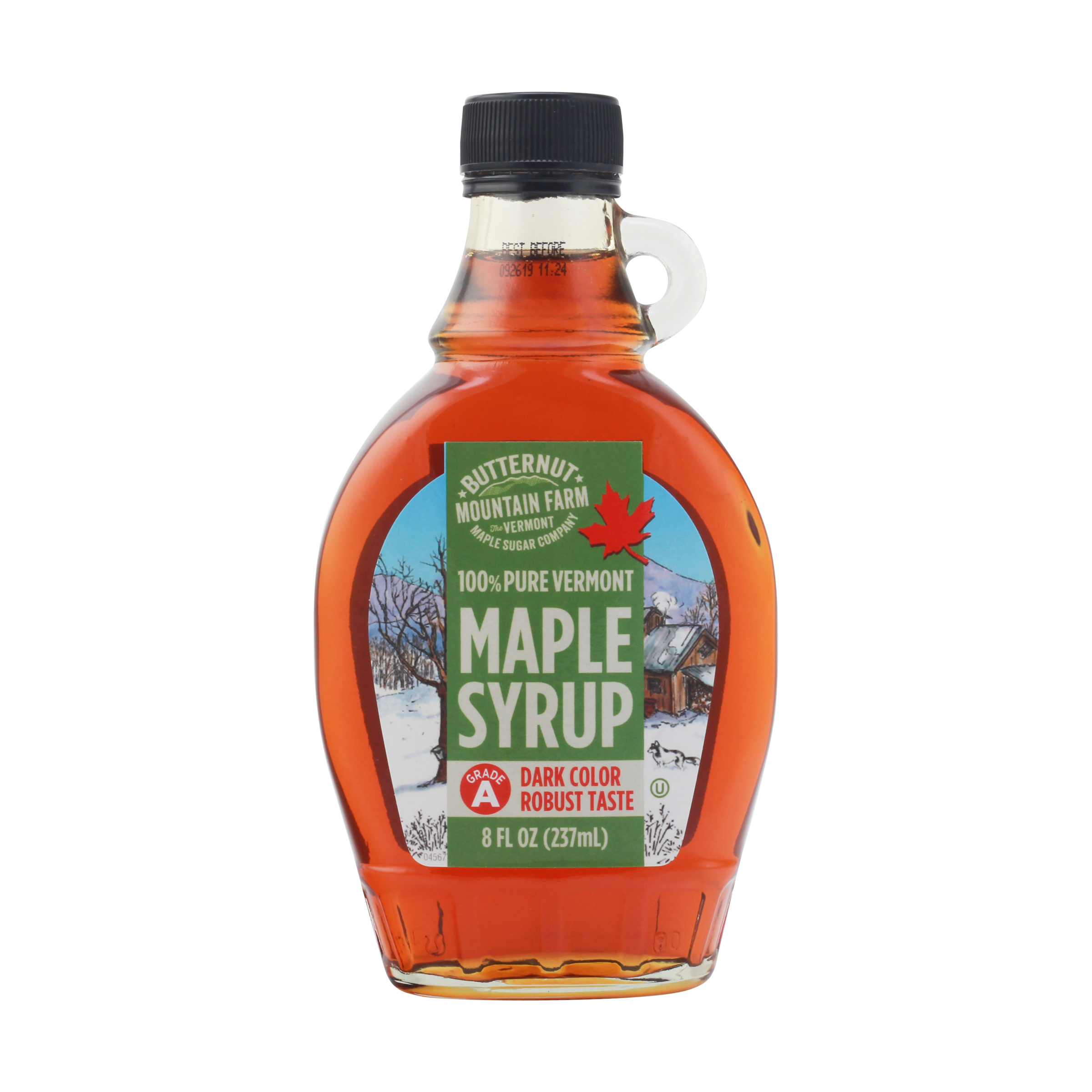One of the major challenges of starting a low FODMAP diet is finding new and interesting foods to try. In a perfect world, we’d all stick to the eat-this-not-that pamphlets passed out by our doctors, but after a few days of chicken and rice, those middle aisles become oh so tempting. We get it, and we got you!
Powered by the Spoonful app, we analyzed the labels of over 600,000 grocery products to give you the 50 most common ingredients that are moderate or high in FODMAPs.
Author’s note
We love creating data-driven posts like these, but they take time. If you’d like to see more of this type of content, let us know by leaving a comment or sharing the post on social. Thanks!
New to FODMAPs? Check out our Ultimate Low FODMAP Food List – compiled by our team of registered dietitians from around the world.
45. Bread Crumbs
Found on 0.4% of labels
Bread crumbs on an ingredient label can be a little tricky, because the FODMAP load very much depends on the bread type. If the brand doesn’t spell out the bread’s ingredients, it was likely made from wheat, which can be high or low in FODMAPs depending on serving size. If the bread crumbs came from gluten-free white bread or from sourdough, these are fair game, but make sure they contain no garlic or onion.
Category
Oligosaccharide (Fructan)
Substitutes
Sourdough Bread Crumbs, Gluten-Free Bread Crumbs
44. Green Onion, Scallions, Spring Onion
Found on 0.4% of labels.
Here’s a great example of how nuanced the low-FODMAP diet can be. As it turns out, green onions can be low or high FODMAP depending on which part you’re eating. In short, eat the tips and stay away from the bulb!
Category
Oligosaccharide (Fructan)
Substitutes
Green Tips of Spring Onion, Green Tips of Leek, Green Tips of Scallion, Chive, Onion Infused Oil

43. Inulin
Found on 0.5% of labels – high in FODMAPs
Inulin is a fermentable fiber that occurs naturally in foods like onions, garlic and wheat. If you find inulin on a food label, it has likely been extracted from chicory root and is being used as an additive to boost fiber and sweetness. Unfortunately, inulin is a no-go on the low-FODMAP diet due to excessive fructans.
Category
Oligosaccharide (Fructan)
42. Sour Cream
Found on 0.6% of labels – moderate in FODMAPs
Cream contains more milk fat and less lactose, which means it can be high or low in FODMAPs depending on serving size. Defer to the Monash app for more details. Keep an eye out for Lactaid and Green Valley Creamery Lactose-Free Sour Cream if you want to consume a larger serving size.
Category
Disaccharide (Lactose)
41. Rye, Rye Flour
Found on 0.6% of labels – high in FODMAPs
Rye is a cereal grain that is closely related to wheat and barley. Used in everything from bread to whiskey, rye is typically high in FODMAPs due to excess fructans, GOS and fructose. We recommend avoiding rye until your triggers are known.
Category
Oligosaccharide (Fructan, GOS), Monosaccharide (Fructose)
Substitutes
Oat, Tapioca, Rice, Quinoa, Maize, Buckwheat, Millet, Polenta
40. Chicory Root
Found on 0.6% of labels – high in FODMAPs
Chicory root is commonly used as a coffee alternative, because it has a similar color and taste. Though it is a great source of water-soluble fiber, chicory root is high in FODMAPs at most serving sizes.
Category
Oligosaccharide (Fructan)
39. Cherries
Found on 0.6% of labels – high in FODMAPs
Cherries, like many other fruits, are high in fructose, which makes them high in FODMAPs. Making a farmer’s market run? Pick up some fresh strawberries or blueberries instead!
Category
Monosaccharide (Fructose), Polyol (Sorbitol)
Substitutes
Unripe Banana, Blueberry, Kiwi, Lime, Mandarin, Orange, Papaya, Pineapple, Rhubarb, Strawberry
38. Bananas (Ripe)
Found on 0.6% of labels – moderate in FODMAPs
Like other ingredients, bananas can be high or low in FODMAPs depending on maturity. Ripe bananas tend to amass more fructans in response to cold and drought, while unripe bananas have considerably less of a FODMAP load.
Category
Oligosaccharide (Fructan)
Substitutes
Banana (Unripe), Plantains
37. Green Bell Peppers
Found on 0.6% of labels
Green bell peppers have a low-FODMAP serving size, but still make our list due to high sorbitol levels in larger serves. Interestingly enough, red bell peppers are low FODMAP, so you can still get your bell pepper fix.
Category
Polyol (Sorbitol)
Substitutes
Red Bell Pepper, Bean Sprout, Carrot, Choy Sum, Eggplant, Kale, Tomato, Spinach, Zucchini
36. Mangos, Mango Juice
Found on 0.7% of labels – high in FODMAPs
Mangos, like many other fruits, are high in FODMAPs due to excess fructose.
Category
Monosaccharide (Fructose)
Substitutes
Unripe Banana, Blueberry, Kiwi, Lime, Mandarin, Orange, Papaya, Pineapple, Rhubarb, Strawberry
35. Peach
Found on 0.7% of labels – high in FODMAPs
Similar to mangos, peaches are high in FODMAPs and generally best to avoid. All peaches are high in sorbitol, but some varieties contain other FODMAPs. Clingstone peaches are high in mannitol and sorbitol, while white peaches are high in fructans and sorbitol.
Category
Polyol (Sorbitol)
Substitutes
Unripe Banana, Blueberry, Kiwi, Lime, Mandarin, Orange, Papaya, Pineapple, Rhubarb, Strawberry
34. Pumpkin
Found on 0.7% of labels – high in FODMAPs
Traditional pumpkin (including canned pumpkin) can be high or low in FODMAPs depending on serving size. If you’re looking to mix pumpkin into a pie or bread recipe, we recommend checking the Monash for more details.
Category
Oligosaccharide (Fructan), Oligosaccharide (GOS)
33. Mushrooms
Found on 0.8% of labels – high in FODMAPs
Mushrooms are often considered high in FODMAPs, but there are a few varieties such as oyster and canned champignons that have a relatively good-sized low FODMAP serve.
Category
Polyols (Mannitol)
Substitutes
Oyster Mushrooms, Shimeji Mushrooms, Black Fungi Mushrooms
32. Pears, Pear Juice
Found on 1.0% of labels – high in FODMAPs
Pears are high in FODMAPs due to excess fructose and sorbitol. Prickly pears, however, are low in FODMAPs.
Category
Monosaccharide (Fructose), Polyol
Substitutes
Unripe Banana, Blueberry, Kiwi, Lime, Mandarin, Orange, Papaya, Pineapple, Rhubarb, Strawberry
31. Sorbitol
Found on 1.0% of labels – high in FODMAPs
Just like its sugar alcohol counterparts mannitol and xylitol, sorbitol is high in FODMAPs and should be avoided until your triggers are confirmed. Sorbitol is often found in sugar-free gum, mints, candies, and cough drops. Remember, real sugar is low FODMAP!
Category
Polyol
30. Beets, Beet Powder
Found on 1.0% of labels – moderate in FODMAPs
Beets can be high or low in FODMAPs depending on preparation and serving size. Pickled and canned beets contain less of a FODMAP load than fresh beets. If you’d like to learn more, we recommend the Monash app for more details.
Category
Oligosaccharide (Fructan), Oligosaccharide (GOS)
Substitutes
Bean Sprouts, Carrot, Choy Sum, Eggplant, Kale, Tomato, Spinach, Zucchini
29. Cashews
Found on 1.2% of labels – high in FODMAPs
Cashews, pistachios and almonds are all high in FODMAPs at moderate serves. You can still get nutty on low FODMAP though, just grab a handful of brazil nuts, peanuts or pecans!
Category
Oligosaccharide (Fructan), Oligosaccharide (GOS)
Substitutes
Brazil Nut, Chestnut, Peanut, Pecan, Pine Nut, Walnut
28. Raisins
Found on 1.2% of labels – high in FODMAPs
Raisins (aka dried grapes) and many other dried fruits are higher in FODMAPs than their fresh fruit counterpart. You can still enjoy fresh grapes though! They have a bountiful low-FODMAP serving size. Check the Monash app, there is a low FODMAP serving size for raisins so no need to completely avoid.
Category
Oligosaccharide (Fructan)
Substitutes
Unripe Banana, Blueberry, Kiwi, Lime, Mandarin, Orange, Papaya, Pineapple, Rhubarb, Strawberry
27. Carob, Carob Bean, Carob Powder
Found on 1.4% of labels – moderate in FODMAPs
If you’re on the hunt for something sweet, you might have come across carob, a sweet alternative to cocoa. Carob and carob powder are mostly used to make chocolate-like chips, because they are naturally sweeter than cocoa. Unfortunately, this sweetener should be limited while on the low-FODMAP diet.
Category
Oligosaccharide (Fructan)
26. Durum, Durum Wheat
Found on 1.4% of labels – moderate in FODMAPs
Durum is a variety of spring wheat that is typically used to make pasta. It is the second most common variety, the first being wheat itself. Wheat and its derivatives all contain moderate fructan levels, and although low FODMAP is not a wheat-free diet, we recommend limiting its intake during the elimination phase.
Category
Oligosaccharide (Fructan)
Substitutes
Oat, Tapioca, Rice, Quinoa, Maize, Buckwheat, Millet, Polenta

25. Semolina
Found on 1.5% of labels – high in FODMAPs
Used primarily in Middle-Eastern cuisine, semolina is a type of flour made from durum wheat. Like many other wheat varieties, semolina has a moderate FODMAP load, so we recommend limiting your intake during the elimination phase.
Category
Oligosaccharide (Fructan)
Substitutes
Oat, Tapioca, Rice, Quinoa, Maize, Buckwheat, Millet, Polenta
24. Buttermilk
Found on 2.1% of labels – high in FODMAPs
Did you know? Buttermilk contains no butter and is actually lower in fat than regular cow’s milk. It’s also lower in lactose, but unfortunately, that doesn’t keep it off our list.
Category
Disaccharide (Lactose)
Substitutes
Lactose-free cow’s milk mixed with a souring agent such as lemon juice
23. Celery, Celery Seed
Found on 2.5% of labels – moderate in FODMAPs
Celery can be high or low in FODMAPs depending on serving size. We recommend limiting celery during the elimination or until you understand your triggers.
Category
Polyols (Mannitol)
Substitutes
Bean Sprout, Carrot, Choy Sum, Eggplant, Kale, Tomato, Spinach, Zucchini
22. Fruit, Fruit Juice
Found on 2.5% of labels
Similar to other generic terms like flour or vegetable, fruit and fruit juice on a food label can be high or low FODMAP depending on the fruits in play. If the label doesn’t specify, we avoiding that product.
Category
Unclassified
Substitutes
Unripe Banana, Blueberry, Kiwi, Lime, Mandarin, Orange, Papaya, Pineapple, Rhubarb, Strawberry
21. Molasses
Found on 2.8% of labels – high in FODMAPs
Molasses is a sweetener made from boiling sugar beets and extracting the juice. It is considered high in FODMAPs in moderate and large servings, but there are lots of great sweetener alternatives out there like pure maple syrup and rice malt syrup. There is a small low FODMAP serving size for molasses so if you are using a small amount in a recipe or see it at the end of the ingredient list, it is likely low FODMAP.
Category
Oligosaccharide (Fructan), Monosaccharide (Fructose)
Substitutes
Glucose Syrup, Pure Maple Syrup, Rice Malt Syrup

20. Almonds
Found on 3.1% of labels – moderate in FODMAPs
Almonds can be high or low in FODMAPs depending on serving size, but it still makes the list. That being said, almondmilks are typically low in FODMAPs, because they contain very few almonds per serving.
Category
Oligosaccharide (GOS)
Substitutes
Brazil Nuts, Chestnuts, Peanuts, Pecans, Pine Nuts, Walnuts
19. Honey
Found on 3.2% of labels – high in FODMAPs
According to the US Sugar Association, honey is approximately 40% fructose — yikes! Luckily, there are plenty of low-FODMAP sweeteners out there. Check the Monash app since there is a low FODMAP serving size for honey, this has been updated in recent years so feel free to enjoy a small serving. Also, if you spot honey towards the end of the ingredient list and the sugar content is 7 grams or less, it falls within a low FODMAP serving size.
Category
Monosaccharide (Fructose)
Substitutes
Glucose Syrup, Pure Maple Syrup, Rice Malt Syrup
18. Barley
Found on 4.3% of labels – high in FODMAPs
Known for being the world’s oldest cultivated cereal, barley is a staple of many diets — just not low FODMAP. If you’re looking for an alternative, try sprouted pearl barley. Many of the FODMAPs are removed during the sprouting process.
Category
Oligosaccharide (Fructan, GOS)
Substitutes
Sprouted Pearl Barley
17. Coconut
Found on 4.4% of labels – moderate in FODMAPs
Fresh coconut, coconut milk, coconut water, and coconut sugar can be high or low in FODMAPs depending on the serving size – we recommend looking at the Monash app for more details. Coconut oil and coconut yogurt are typically low in FODMAPs, while coconut flour is high.
Category
Polyols (Sorbitol)
16. Apples, Apple Juice
Found on 4.4% of labels – high in FODMAPs
An apple a day keeps the doctor away… unless that doctor has put you on low FODMAP. Apples, applesauce and apple cider are all high in FODMAPs due to fructose, the sugar found in fruit. Apple cider vinegar, however, is low in FODMAPs.
Category
Monosaccharide (Fructose), Polyols (Sorbitol)
Substitutes
Unripe Banana, Blueberry, Kiwi, Lime, Mandarin, Orange, Papaya, Pineapple, Rhubarb, Strawberry
15. High Fructose Corn Syrup
Found on 4.6% of labels – high in FODMAPs
Present in many processed foods, high fructose corn syrup isn’t great for most diets, and low FODMAP is no exception. As you can imagine, HFCS is high in fructose, making it one to avoid during the elimination phase. Watch out for HFCS in sodas, there are some sugar-sweetened sodas if you are looking for a low FODMAP alternative.
Category
Monosaccharide (Fructose)
Substitutes
Glucose Syrup, Pure Maple Syrup, Rice Malt Syrup, Cane Sugar, Palm Sugar, Brown Sugar, Beet Sugar, Common Table Sugar, Dextrose
14. Chocolate
Found on 5.1% of labels – moderate in FODMAPs
This one’s tricky. If you come across chocolate on a food label, the product contains lactose, which means it could be low or high in FODMAPs depending on serving size. Dark chocolate on the other hand, contains less lactose and therefore has a larger safe serving size. We recommend taking it easy on milk chocolate, but you can reach for dark chocolate in moderation.
Category
Disaccharide (Lactose)
13. Peas
Found on 6.3% of labels – high in FODMAPs
Peas, including black eye peas and snow peas, are typically high in FODMAPs. Pea protein, however is likely not, so you can enjoy milks and other products made with pea protein. Just watch your intake of pea protein since it has been recently retested with mixed results. Feel free to enjoy pea protein if you have been tolerating it without issues.
Category
Oligosaccharide (Fructan), Oligosaccharide (GOS)
Substitutes
Bean Sprout, Carrot, Choy Sum, Eggplant, Kale, Tomato, Spinach, Zucchini, Green Bean
12. Cream
Found on 7.1% of labels – moderate in FODMAPs
Cream contains more milk fat and less lactose than regular cow’s milk, but it is still something to watch out for until you know your triggers.
Category
Disaccharide (Lactose)
11. Cocoa
Found on 7.4% of labels – moderate in FODMAPs
Cocoa (or cacao) can be high or low in FODMAPs depending on serving size – defer to the Monash app for more details. Cocoa used to flavor a food or beverage can be considered low FODMAP since it is present in smaller quantities.
Category
Oligosaccharide (Fructan, GOS)
10. Whey, Milk Protein
Found on 8.5% of labels – moderate in FODMAPs
Whey is another name for the liquid by-product of cheese-making. FODMAP levels of whey and whey-based products depend on the amount of lactose left over from processing.
Want more information on FODMAPs and cheese? Check out this article by FODMAP Everyday.
Category
Disaccharide (Lactose)
Substitutes
Hemp Protein, Egg Protein, Sacha Inch Protein, Pea Protein
9. Vegetable, Vegetable Juice
Found on 9.8% of labels
The term vegetable or vegetable juice on a food label is pretty vague and may include high FODMAP varieties like asparagus, cauliflower or peas. Unless specific vegetables are named as modifiers, we recommend avoiding this ingredient.
Category
Unclassified
8. Onion, Onion Powder
Found on 11% of labels – high in FODMAPs
Onion and its derivatives (onion powder, onion salt, etc.) are all high in FODMAPs. However, onions are not oil-soluble or fat-soluble, which means you can enjoy onion-infused oils from brands like Fody Foods.
Category
Oligosaccharide (Fructan)
Substitutes
Green Tips of Spring Onion, Green Tips of Leek, Green Tips of Scallion, Chive, Onion Infused Oil
7. Garlic, Garlic Powder
Found on 12% of labels – high in FODMAPs
Quite possibly the most difficult food to avoid while eating a low FODMAP diet, garlic is high in fructans in both whole and powder form. Garlic infused oils are low in FODMAPs, because fructans are not fat soluble.
Garlic does have a very small low-FODMAP serve, which makes some varieties of ketchup, Worcestershire sauce, and other garlic-containing condiments safe in smaller portions.
Category
Oligosaccharide (Fructan)
6. Wheat, Wheat Flour
Found on 16% of labels – moderate in FODMAPs
Although there is a small portion of wheat that is low in FODMAPs (refer to Monash for details), it is recommended to limit wheat, especially when in the elimination phase.
Wheat also comes in many varieties (durum, emmer, semolina, spelt, farina and farro) each of which should be considered moderate in FODMAPs so watch portion sizes.
Category
Oligosaccharide (Fructan)
Substitutes
Oat, Tapioca, Rice, Quinoa, Maize, Buckwheat, Millet, Polenta
5. Flour
Found on 17% of labels
When “flour” in on the ingredient list, you should assume that the flour is wheat-based. And although there is a small portion of wheat that is low in FODMAPs, it is recommended to limit wheat especially when in the elimination phase.
If the flour is made from low-FODMAP grains such as oat, tapioca, rice or quinoa, then it is fair game.
Category
Oligosaccharide (Fructan)
4. Natural Flavors
Found on 18% of labels
If you see natural flavors on a food label, you’ll need to do a bit of digging. If the food is savory, it may contain ingredients such as garlic or onion, which are typically high in FODMAPs.
Sweet foods are less likely to contain trigger ingredients, and natural flavors present in quantities <2% of the total ingredients are unlikely to cause IBS symptoms.
When in doubt, we recommend calling the manufacturer to confirm which ingredients were used to create the natural flavor.
Category
Unclassified
3. Milk
Found on 20% of labels – high in FODMAPs
Cow’s milk, regardless of the fat content, is high in FODMAPs unless the packaging states that it is lactose-free or you see lactase enzyme listed as another ingredient.
If you come across milk on a cheese label, you’ll want to check the nutrition facts to see how many grams of added sugar (i.e. lactose) are present. According to Monash, cheeses with less than 1 gram of sugar are low lactose and therefore low FODMAP, barring any other FODMAP ingredients that may be present.
Category
Disaccharide (Lactose)
Substitutes
Lactose-Free Cow’s Milk

2. Soy, Soybean, Soy Flour
Found on 21% of labels – moderate in FODMAPs
Buckle up, this one’s a bit nuanced. Soy and soy-based products can be high or low in FODMAPs depending on preparation and bean maturity. In general, most foods containing soybeans are high in FODMAPs, but some varieties like firm tofu, tempeh, soy sauce, and edamame are low in FODMAPs.
Soy lecithin, a common emulsifier, is also considered low FODMAP.
Soymilk can be low FODMAP if made from soy protein, but soymilk made from soybeans, which is the most common type in the U.S., should be avoided.
1. Corn
Found on 24% of labels
Like soy, corn can be high or low in FODMAPs depending on preparation and serving size. We recommend avoiding corn as a vegetable (i.e. canned corn, corn kernels, corn on the cob) during the elimination phase as these foods contain high levels of sorbitol.
Foods made from corn starch or ground corn (corn tortillas, cereal, pasta, grits etc.), however, are low in FODMAPs and can be enjoyed however you like!
Category
Polyols (Sorbitol)
Substitutes
Bean Sprout, Carrot, Choy Sum, Eggplant, Kale, Tomato, Spinach, Zucchini
Summary & Advice
We hope this post serves as a useful starting point for low FODMAP label reading. Just remember — when you’re looking into a particular ingredient, its FODMAP content can vary based on both form and serving size. Ingredients like soy, corn, and milk are great examples of this.
And like always, we highly recommend working with a low FODMAP trained dietitian to make sure you get the nutrition you need while feeling confident in your food choices.
Happy grocery shopping!

This is a wonderful guide thankyou. It mentioned every single one of my problem foods almost. I am now trying to sort out Salicylates and Sulphites in foods.